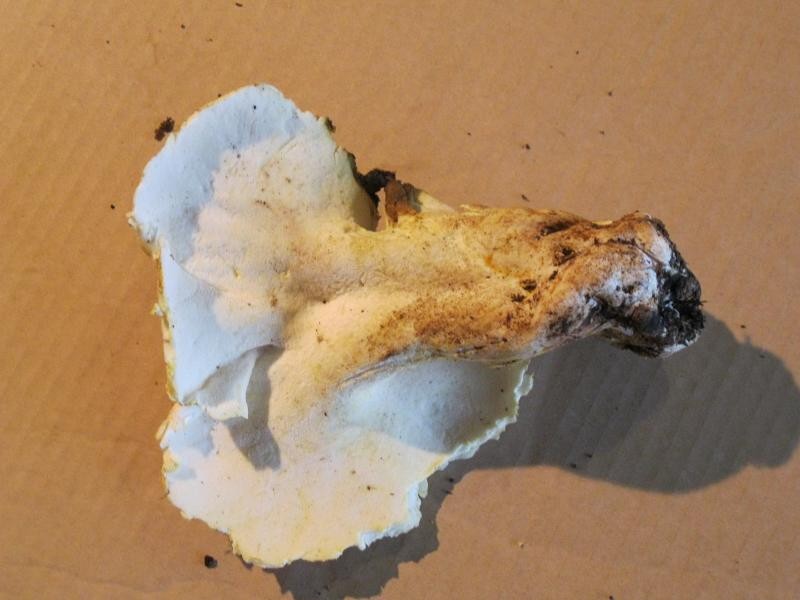
Comment from Judy 10/13/2017:
Albatrellis avellaneus and A. ovinus, depending on the book you use, consider them the same or variant of each other. There is some difference in the spores tho. They are not too common, but in the Forest Service handbook of Strategy One species. They maybe aren't that rare don't seem to fruit every year. Also, because they may be mycorrhyzal, the plant stays in the ground and can reproduce again the following year. A. ovinus is considered more common, but the two species are often mistaken for each other. A. ovinus is found as far east as the Rocky mountains. A. avellaneus is a coastal species however, from northern California to Friday Harbor and I suspect Vancouver Island.

1. |

2. |

3. |

4. |

5. |

6. |

7. |

8. |

9. |

10. |

11. |

12. |

13. |

14. |

15. |

16. |

17. |

18. |

19. |

20. |

21. |

22. |

23. |

24. |

25. |

26. |

27. |

28. |

29. |

30. |

31. |

32. |